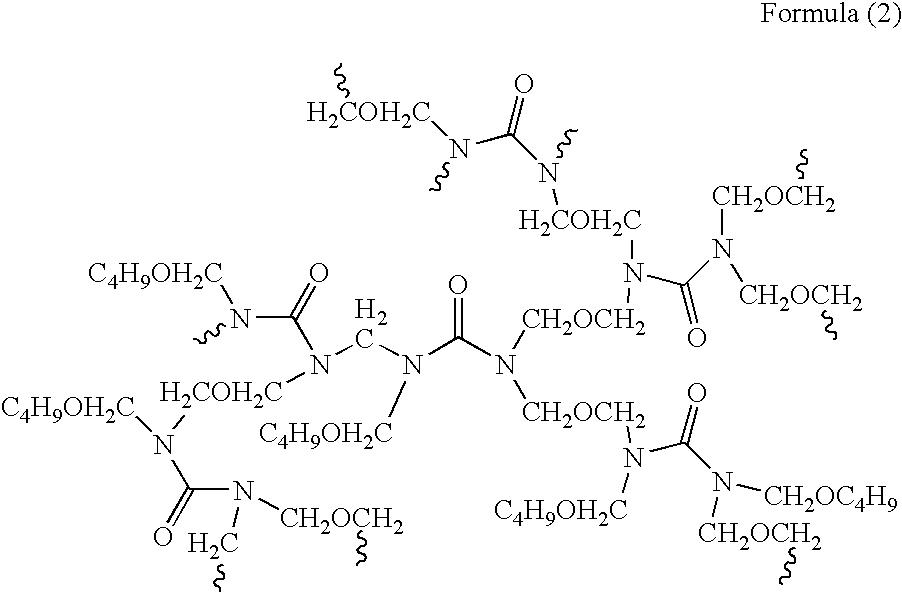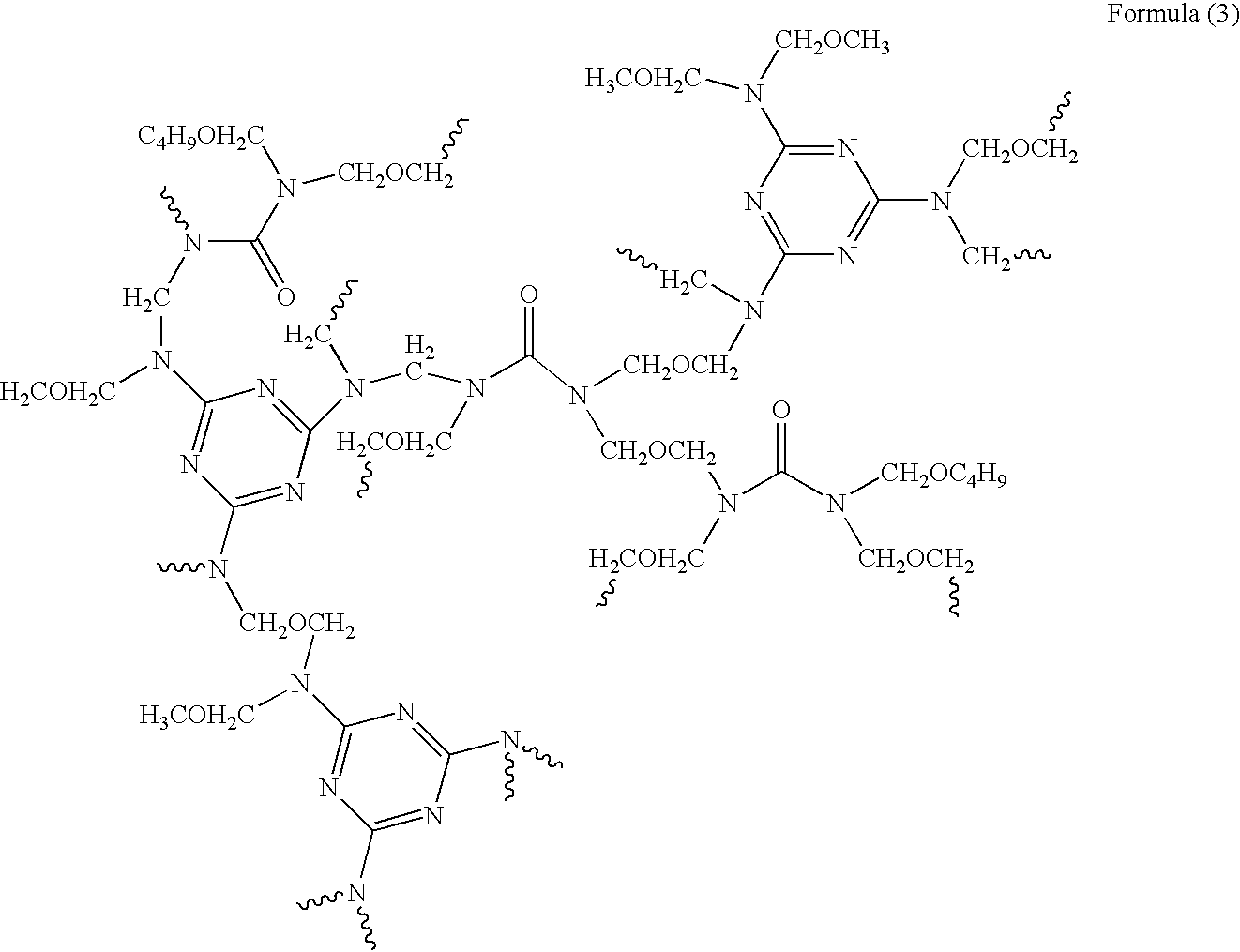Composition for forming anti-reflective coat
a technology of anti-reflective coating and composition, which is applied in the direction of photosensitive materials, instruments, photomechanical equipment, etc., can solve the problems of serious problems such as the influence of random reflection and standing wave off the substrate, and achieve the effect of excellent photoresist pattern and high dry etching ra
- Summary
- Abstract
- Description
- Claims
- Application Information
AI Technical Summary
Benefits of technology
Problems solved by technology
Method used
Image
Examples
synthesis example 1
[0077]After 15 g of 2,2,2-trifluoroethyl methacrylate and 15 g of 2-hydroxyethyl methacrylate were dissolved in 120 g of ethyl lactate, the resulting reaction solution was warmed to 70° C., and at the same time nitrogen gas was passed into the reaction solution. Thereafter, 0.6 g of azobisisobutyronitrile was added as a polymerization initiator. The resulting solution was stirred under nitrogen atmosphere for 24 hours and 0.01 g of 4-methoxyphenol was added as a short stopping agent. Then, the reaction solution was poured into diethyl ether to obtain a resin compound of formula (6) as a precipitate. The resulting resin compound was subjected to GPC analysis and had a weight average molecular weight of 20,200 in terms of standard polystyrene. In formula (6), n and m are molar ratio of the structural unit monomers, and n+m=1.
[0078]
synthesis example 2
[0079]After 15 g of 2,2,2-trichloroethyl methacrylate and 15 g of 2-hydroxyethyl methacrylate were dissolved in 120 g of ethyl lactate, the resulting reaction solution was warmed to 55° C., and at the same time nitrogen gas was passed into the reaction solution. Thereafter, 0.6 g of 2,2-azo(4-methoxy-2,4-dimethylvaleronitrile (trade name: V-70 manufactured by Wako Pure Chemical Industries, Inc.) was added as a polymerization initiator. The resulting solution was stirred under nitrogen atmosphere for 24 hours and 0.01 g of 4-methoxyphenol was added as a short stopping agent. Then, the reaction solution was poured into diethyl ether to obtain a resin compound of formula (7) as a precipitate. The resulting resin compound was subjected to GPC analysis and had a weight average molecular weight of 16,100 in terms of standard polystyrene. In formula (7), n and m are molar ratio of the structural unit monomers, and n+m=1.
[0080]
synthesis example 3
[0081]To 80 g of propylene glycol monomethyl ether, 10 g of cresol novolak resin (trade name: ECN1299 manufactured by Asahi Chiba Co., Ltd., weight average molecular weight: 3,900) was added and dissolved therein. After 9.7 g of 9-anthracene carboxylic acid and 0.26 g of benzyl triethyl ammonium chloride were added to the resulting solution, the reaction solution was subjected to reaction at 105° C. for 24 hours to obtain a resin compound of formula (8). The resulting resin compound was subjected to GPC analysis and had a weight average molecular weight of 5,600 in terms of standard polystyrene.
[0082]
PUM
| Property | Measurement | Unit |
|---|---|---|
| wavelength | aaaaa | aaaaa |
| wavelength | aaaaa | aaaaa |
| wavelength | aaaaa | aaaaa |
Abstract
Description
Claims
Application Information
 Login to View More
Login to View More - R&D
- Intellectual Property
- Life Sciences
- Materials
- Tech Scout
- Unparalleled Data Quality
- Higher Quality Content
- 60% Fewer Hallucinations
Browse by: Latest US Patents, China's latest patents, Technical Efficacy Thesaurus, Application Domain, Technology Topic, Popular Technical Reports.
© 2025 PatSnap. All rights reserved.Legal|Privacy policy|Modern Slavery Act Transparency Statement|Sitemap|About US| Contact US: help@patsnap.com



